The SP80 project, which aims to reach 80 knots with a sailing boat and which is supported by the watchmaker Richard Mille, takes a new important step forward. The Swiss team supported by the École Polytechnique Fédérale of Lausanne is in fact about to complete the transom of its very special kiteboat built at Persico Marine (Here all our posts about Persico Marine) the Italian shipyard where since 2007 all the boats of the Luna Rossa Team have been built for its challenges at the America’s Cup.
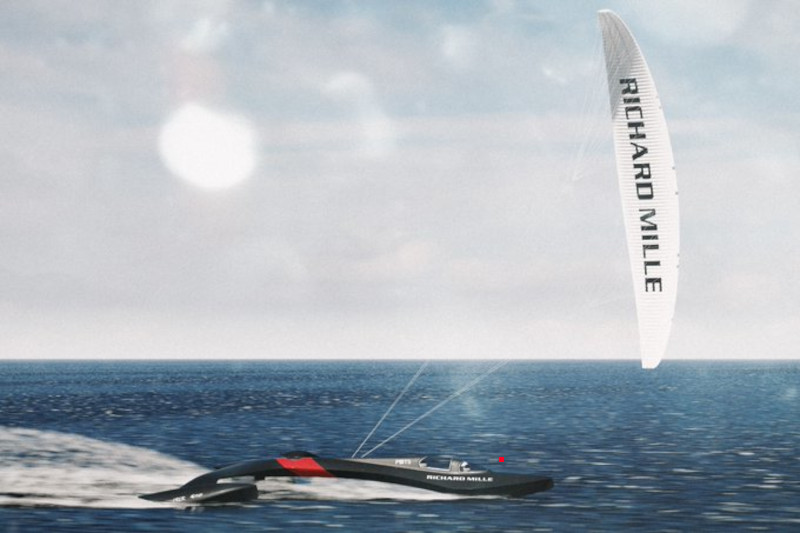
The challenge to Vestas Sailrocket 2
The completion of the transom is an important step in the project that aims to establish the new record for a sailing vessel currently held by the Vestas Sailrocket 2, the wing sail proa with which on 24 November 2012, in Valvis Bay, Namibia, the Australian Paul Larsen took it to reach 65.45 knots equal to 121 km/h.
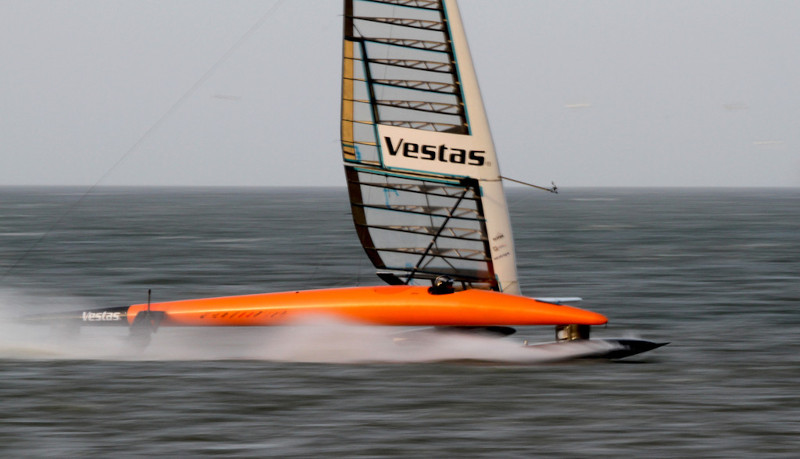
SP80, a refined all carbon construction
The closing operation of the crosspiece is particularly complex because to join the upper and lower part of the piece, entirely built in carbon fibre, it is necessary to proceed with a series of steps. We start with the insertion of the reinforcing bulkheads, then the bonding materials are spread on the bulkheads and on the perimeter of the lower part of the crossbar. The alignment checks and the positioning of the upper part of the crosspiece follow.
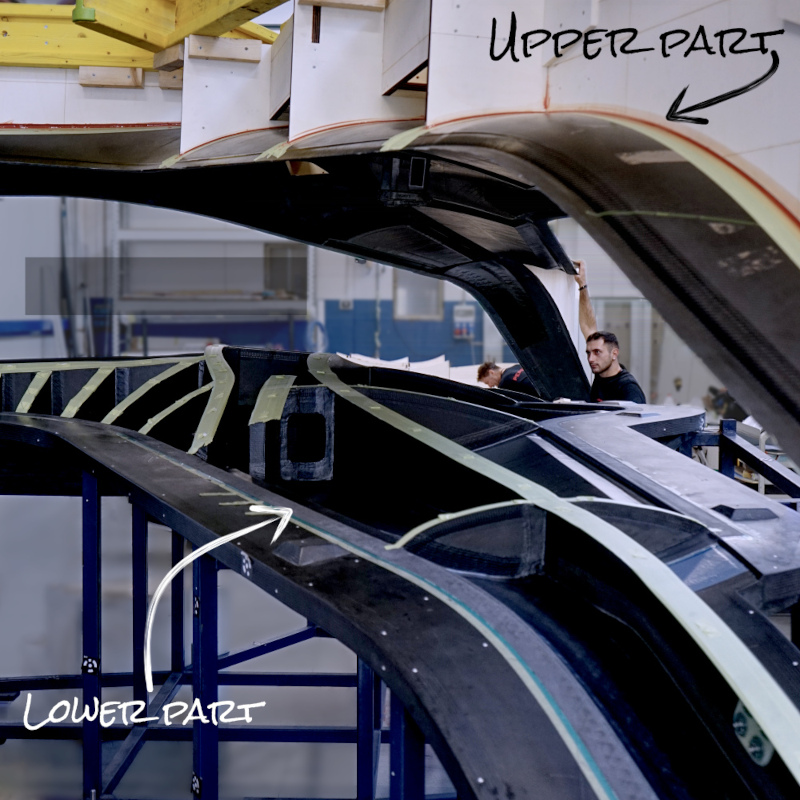
Only two hours for the final step
At the end of the preparation phases comes the most critical and final step of gluing the two sections. An operation in which it is impossible to go wrong and which must be carried out within two hours, otherwise the composite materials used for gluing will be unusable. Finally, to guarantee maximum solidity of the connection and to obtain a true monoblock, it will be necessary to border the perimeter joint of the crossbar with carbon fiber strips. Once all this is done, you can proceed with the painting, not only for an aesthetic fact but as a protection from UV rays, saltiness but also from possible impacts.
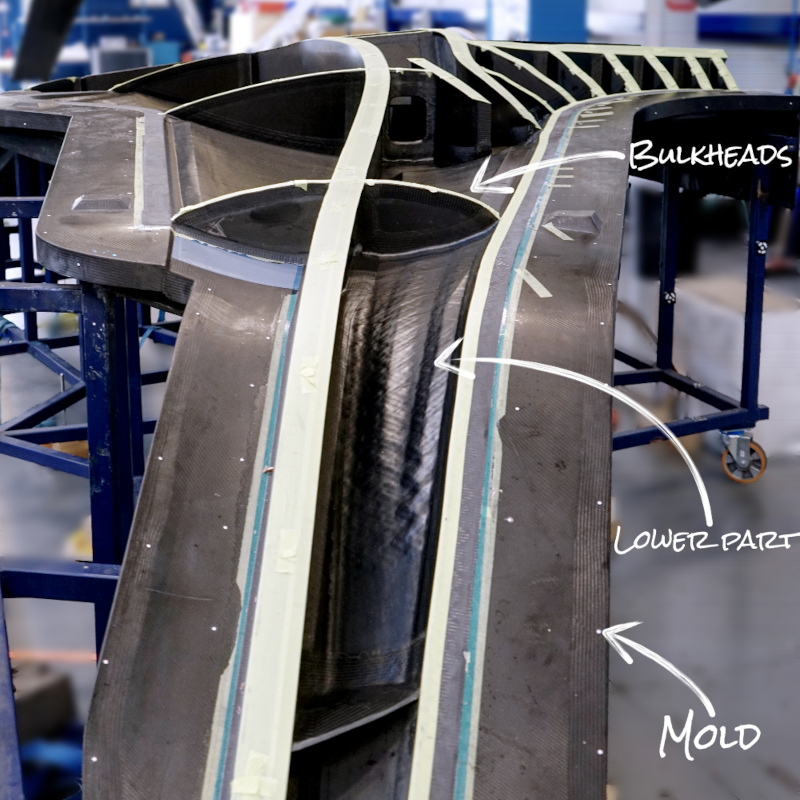
SP80, a month of work with Persico Marine technicians
In short, a long procedure that began in early March, when some team members reached Persico Marine to collaborate in the operation, will end by the end of the month. Then, finally, the shipment of the product to Switzerland where the transom will be joined to the cell where the helmsman stays, thus completing the boat. This will open up a new phase in the SP80 challenge which will be able to move from the tests now carried out with a small-scale prototype to testing the potential of its project in real life.
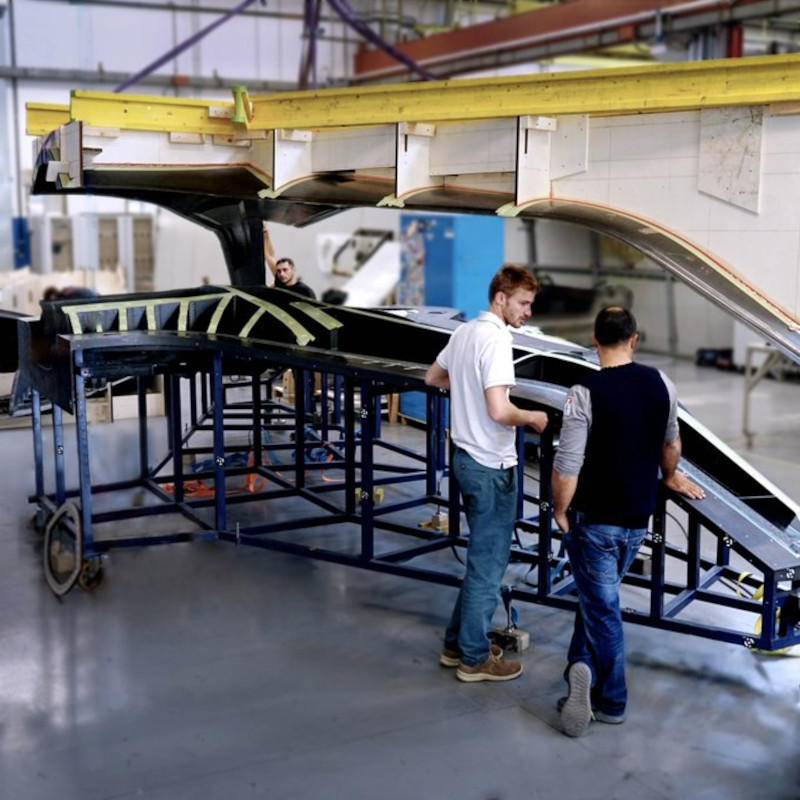
There were three friends with an idea
The SP80 project was born on the initiative of three students of the École Polytechnique Fédérale de Lausanne, Xavier Lepercq, Benoit Gaudiot and Mayeul van den Broek who, passionate about sailing and speed, years ago began to think of a record-breaking boat pulled by a sail from kite. The idea came to them from Alain Thebaul’s Hydroptère who in 2009 broke the 50-knot barrier. Then, in 2012, the exploit of Vestas Sailrocket 2 was a further push to the idea and the three begin to experiment (Benoit Gaudiot is a kite expert) with fins for kite boards developed on the basis of hyperventilation of the immersed surfaces. The results were encouraging and in the various tests carried out in the south of France, Benoit reached 41 knots. The fins worked but the resistance that a man could oppose to the driving force of the sail was limited. Maybe with a boat, friends wondered…
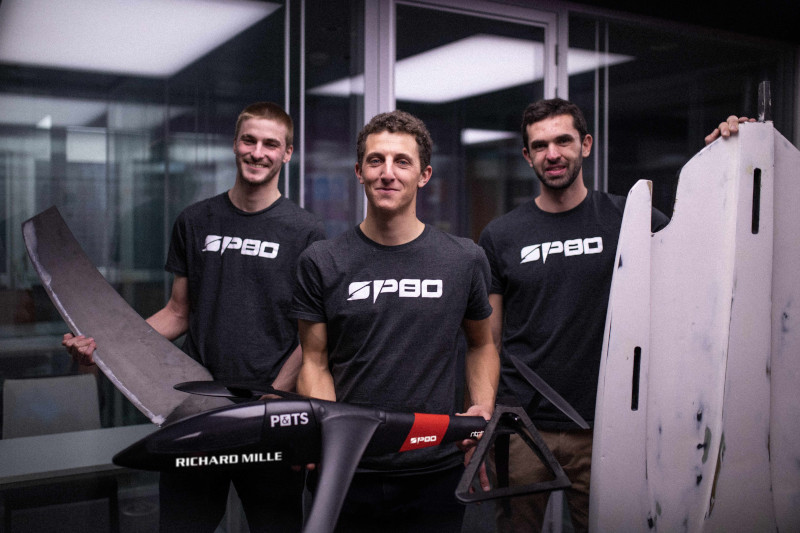
And then in 2021 Richard Mille come
From that question was born the project of an assault on the speed record which first finds the support of P&TS, a Swiss company specializing in patents which allows the idea of the three students to take shape. SP80 is formed and P&TS as academic partner creates a partnership with the École Polytechnique Fédérale which allows other engineers and young students of the École to join the team. It is this new facility that develops the small-scale prototype that begins to carry out tests on Lake Geneva. Tests leading to the definition of the final project. Then, in 2021, the turning point with the entry of Richard Mille (Here all our posts about Richard Mille) as title sponsor and the start of the construction of the central cell by Persico Marine which uses the special Carbon TPT, the same material used to make the cases of Richard Mille watches.
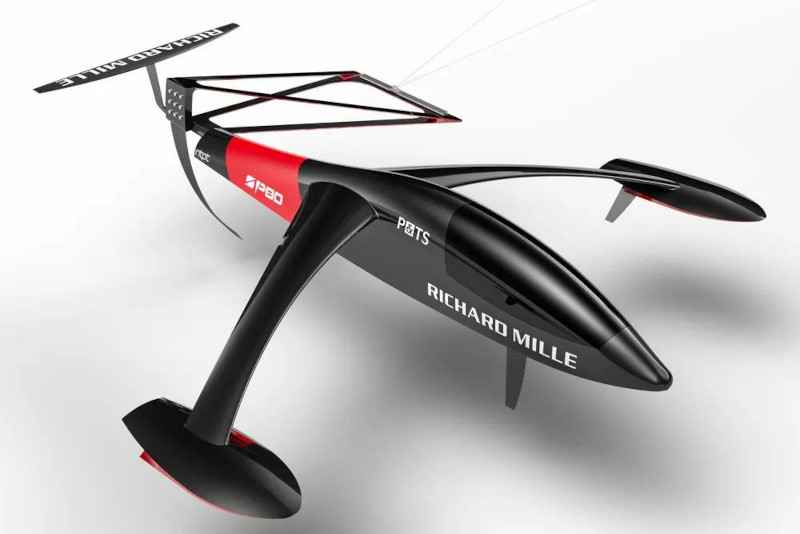
SP80, three times faster than the wind
Persico Marine delivered the hull with the cockpit to the SP80 team in the spring of 2022. Now it’s the turn of the transom and soon the SP80 kiteboat, 7 meters long and weighing 150 kilograms, will be assembled and tested with a sail which, depending on the wind conditions, may have a surface area of between 20 and 50 square metres.
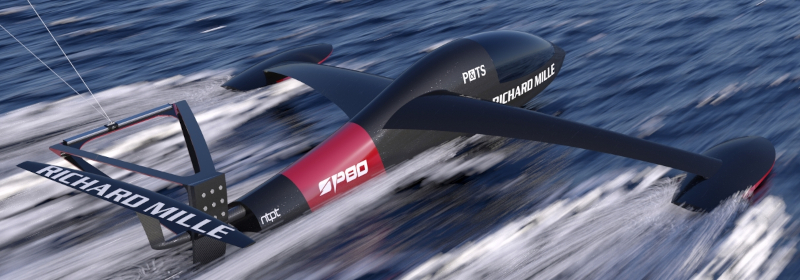
The first “launches, in the summer, in the south of France. “Our goal” says Mayeul van den Broek “is to reach 80 knots, about 150 km/h, with 25 knots of wind which is 45 km/h. So these are not extreme wind conditions and our boat will be able to sail three times faster than the wind speed!”.
Emilio Martinelli





